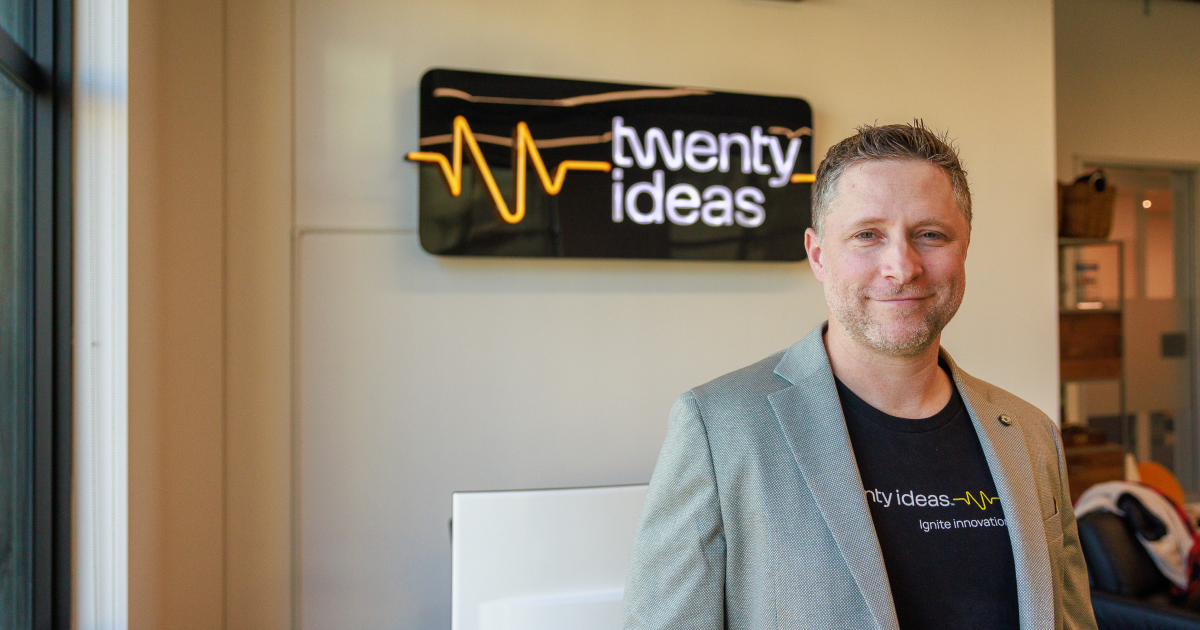
How product discovery saves time & money: unleashing efficiency & ROI
Jul 10
9 min read
The efficient allocation of company resources is crucial in the world of product development. By effectively managing resources, organizations can achieve optimal outcomes while maximizing return on investment. Thorough product discovery saves both time and money while driving efficiency in the product development process.
Product discovery serves as a compass, guiding businesses through the intricate maze of customer needs and competitive landscapes. By engaging in strategic research, analysis, and validation of ideas, product discovery empowers companies to make informed decisions early on, avoiding costly detours down unprofitable paths.
In this article, we will explore the concept of product discovery and how it provides improved efficiency, saves valuable time, and drives cost savings in the pursuit of successful products.
Product discovery: a definition
Product discovery can be defined as the essential initial phase of the product development lifecycle. It revolves around thorough research and comprehension of the needs and desires of potential customers. The ultimate objective is to conceive successful and impactful products.
Throughout the product discovery process, organizations gather valuable information, generate innovative ideas, and validate concepts before committing substantial resources to product development. This entails assessing the market viability of the proposed product, comprehending customer requirements, studying the competitive landscape, and soliciting feedback.
By conducting product discovery, companies gain a deep understanding of their target customers, identify promising market opportunities, and make informed decisions to create products that effectively cater to customer needs and preferences.
The benefits of product discovery
Product discovery gives companies valuable insights into their customer needs and helps them validate the market to mitigate risks before investing resources into the development of the product.
By validating market demand and testing concepts before investing significant resources, companies can reduce the likelihood of developing products that fail to resonate with customers or face limited market appeal. This proactive approach minimizes the need for extensive rework, iterations, and costly fixes down the line.
Product discovery streamlines the development process by providing clarity and focus. It helps teams align their efforts and resources towards the most promising opportunities, avoiding wasted time and expenditure on projects with uncertain market viability.
Some of the most notable benefits of effective product discovery include:
- shorter Time To Market (TTM)
- reduced costs
- better chance of creating successful products

How can product discovery save time?
By investing in thorough product discovery at the outset of a project, companies can optimize their time investment and increase the chances of creating successful products in a timely manner.
Here are some of the ways that product discovery can help save time during product development:
Focus on the right opportunities
By conducting thorough research and understanding customer needs, product discovery helps companies identify the most promising market opportunities. This prevents wasting time on developing products that may not have a viable market or demand.
Get ahead of potential obstacles
During product discovery, potential issues and challenges can be identified and addressed early on. This proactive approach allows companies to make necessary adjustments and modifications before investing substantial time in product design and development.
Efficient resource allocation
Investing time in product discovery ensures that resources are allocated efficiently. By validating concepts and testing ideas, companies can prioritize projects with the highest potential for success, optimizing their use of time, budget, and personnel.
Streamlined development process
Through product discovery, companies gather valuable insights and generate ideas up front. This clarity and focus help streamline the subsequent product development phases. Teams can align their efforts and work more efficiently towards creating a product that meets customer needs from both UX and technical perspectives.
Minimize iterations and rework
Inadequate product discovery can result in developing a product that misses the mark. This can lead to numerous iterations and rework, consuming significant time and resources. Efficient product discovery helps mitigate this risk by ensuring a solid understanding of customer needs and preferences from the start, reducing the need for extensive revisions later on (and contributing to many of the other benefits on this list related to saving resources).
Faster time to market
By investing time in product discovery early on, companies can reduce the time to market (TTM). With a clear understanding of customer requirements and validated concepts, the subsequent design, development, and marketing processes can be executed more efficiently and swiftly.
Streamlined communication and collaboration
Effective communication and collaboration between teams and stakeholders can significantly save time during product development. Product discovery facilitates clear communication, ensuring everyone is aligned and working towards the same goals and helping to avoid misunderstandings and delays.
Early user feedback and iteration
Product discovery involves gathering user feedback early in the process, providing the material for quick iterations and improvements throughout the design phase. By involving users early on, companies can validate assumptions, address pain points, and refine the product iteratively, avoiding time-consuming revisions later.
Efficient prototyping and testing
Prototypes and user testing help to validate product ideas and concepts during and after the discovery phase. This allows companies to iterate and refine the product design efficiently, avoiding wasted time on features or UX/UI choices that may not resonate with users.
How product discovery saves money
Product discovery plays a significant role in saving valuable resources during the product development process. Here's how it can help teams achieve cost savings:

Avoiding costly mistakes
By conducting thorough research and gathering customer insights during product discovery, companies can avoid costly mistakes later on. Understanding customer needs and preferences upfront helps in developing products that are more likely to succeed in the market, reducing the risk of investing in products that do not meet customer expectations and generate low sales.
Managing budget efficiently
Investing time and effort in product discovery ensures that budgets and resources are allocated efficiently. By validating market demand and testing concepts early on, companies can prioritize projects with the highest potential for success. This prevents wasteful spending on developing products with uncertain market viability.
Minimizing rework and iterations
Inadequate product discovery can result in products that require extensive iterations and rework. This undoing and redoing can be expensive, as it involves additional development, manufacturing, and marketing costs. Proper product discovery that includes measures to validate concepts and gather feedback can help identify potential issues and make necessary adjustments early in the process, reducing the need for costly revisions later on.
Targeted marketing and sales efforts
Through product discovery, companies gain insights into a target audience, its preferences, and its buying behaviors. This allows for more targeted marketing and sales efforts, minimizing expenses associated with broad or ineffective marketing campaigns. Companies can focus their resources on the most promising customer segments, allowing them to make the most of their financial resources.
Early identification of costly features
Product discovery helps teams identify and prioritize the most valuable features and characteristics of the product. By focusing on essentials and avoiding unnecessary additions, companies can save on costs associated with designing and implementing complex or low-demand features.
Efficient resource allocation
By validating concepts and conducting market research, companies can allocate their resources more efficiently. They can focus on projects with a higher potential for success and avoid investing in projects that may not generate significant returns. This efficient resource allocation prevents wasted spending and conserves labor hours.
Competitive pricing strategy
Through product discovery, companies gain insights into the market landscape, including competitors and pricing trends. This information allows them to develop a competitive pricing strategy that aligns with customer expectations and market conditions. By pricing their products appropriately, companies can optimize their profitability, attract customers, and avoid pricing mistakes that can result in financial losses.
Risk mitigation
Product discovery involves assessing market demand, conducting competitor analyses, and validating product ideas. These steps help teams identify potential risks and challenges associated with product development and market acceptance. By addressing these risks early on, companies can avoid costly setbacks and minimize the financial impact of unexpected issues that may arise during the later stages of product development.
How can product discovery lead to more successful products?
According to a study by Maze, 57% of product professionals say that product research has a positive effect on customer satisfaction.
By embracing product discovery, companies increase their chances of developing products that resonate with customers, meet their needs, and achieve success in the market.
Here's how effective product discovery can lead to product success:

Understanding customer needs
Product discovery involves in-depth research and analysis of customer needs, problems, and desires. By gaining a deep understanding of the target audience, companies can identify the pain points and unmet needs that their products can address. This customer-centric approach ensures that the resulting products align closely with customer requirements, increasing the chances of success.
Validating demand
Through product discovery, companies can validate the market demand for their products before investing significant resources in development. By conducting market research, analyzing competitors, and gathering feedback, businesses can assess potential demand and ensure that there is a viable market for their offerings. Validating market demand reduces the risk of developing products that have little or no customer interest.
Generating innovative ideas
Product discovery involves generating and exploring new ideas. By immersing themselves in the process, companies can uncover innovative solutions to customer problems and identify unique product features. These creative approaches can differentiate a product from its competitors and attract customer attention, contributing to success in the market.
Iterative testing and validation
Product discovery includes iterative testing and validation of concepts. By obtaining feedback from potential customers, businesses can refine and improve their product ideas based on real-world input. This iterative process ensures that the final product meets customer expectations and aligns with their preferences, increasing the likelihood of success.
Informed decision making
The insights gathered during product discovery enable companies to make informed decisions throughout the product development process. By understanding customer needs, market dynamics, and the competitive landscape, businesses can make strategic choices about product features, pricing, positioning, and marketing strategies. Informed decision-making increases the chances of creating products that effectively meet customer expectations and gain a competitive edge in the market.
Customer satisfaction and loyalty
By focusing on customer needs and preferences, product discovery leads to the creation of products that truly resonate with the target audience. When customers find value in the products and have their needs met, they are more likely to be satisfied and develop loyalty towards the brand. Customer satisfaction and loyalty, in turn, contribute to the success of the products and foster long-term business growth.

Key takeaways
Here are some of highlights from our product discovery guide:
- Product discovery is a crucial step in the product development process that helps save time and money while driving efficiency and maximizing return on investment (ROI).
- It involves thorough research, analysis, and validation of ideas to make informed decisions early on, avoiding costly detours and unprofitable paths.
- Product discovery allows companies to gain a deep understanding of their target audience, uncovering their needs, desires, and preferences.
- By validating market demand and testing concepts before investing significant resources, companies can reduce the risk of developing products that fail to resonate with customers or face limited market appeal.
- Product discovery streamlines the development process by providing clarity and focus, helping teams prioritize the most promising opportunities and avoid wasted time and expenditure on uncertain projects.
- Efficient product discovery minimizes iterations, rework, and unnecessary expenses by ensuring a solid understanding of customer needs and preferences from the start.
- Product discovery leads to successful products by understanding customer needs, validating market demand, generating innovative ideas, iterative testing and validation, and making informed decisions throughout the development process.
- Creating products that resonate with customers leads to higher satisfaction and loyalty, contributing to the success and long-term growth of the business.
Final thoughts
Product discovery is a strategic approach that optimizes time, resources, and decision-making, ultimately leading to efficient processes, cost savings, and successful products.
Contact Twenty Ideas and harness the power of product discovery to drive efficiency, save time, and maximize your ROI. Our team of experts is dedicated to helping businesses gain valuable insights into customer needs, validate market demand, and create successful products that leave a lasting impact.
Whether you're looking to uncover new opportunities, validate concepts, or streamline your development process, Twenty Ideas has the expertise and experience to guide you every step of the way.
Steve Ransom
In an organization renowned for astute insights, Senior Product Manager Steve Ransom specializes in unconventional ideas and lobs them from way outside the box in deep left field. He’s an annoyingly persistent advocate for continuous discovery, rapid prototyping, and frequent customer interviews. A Certified Scrummaster, his specialties include outcome and product curation, creative direction, writing, editing, marketing, publishing, and data analysis.
by this author





